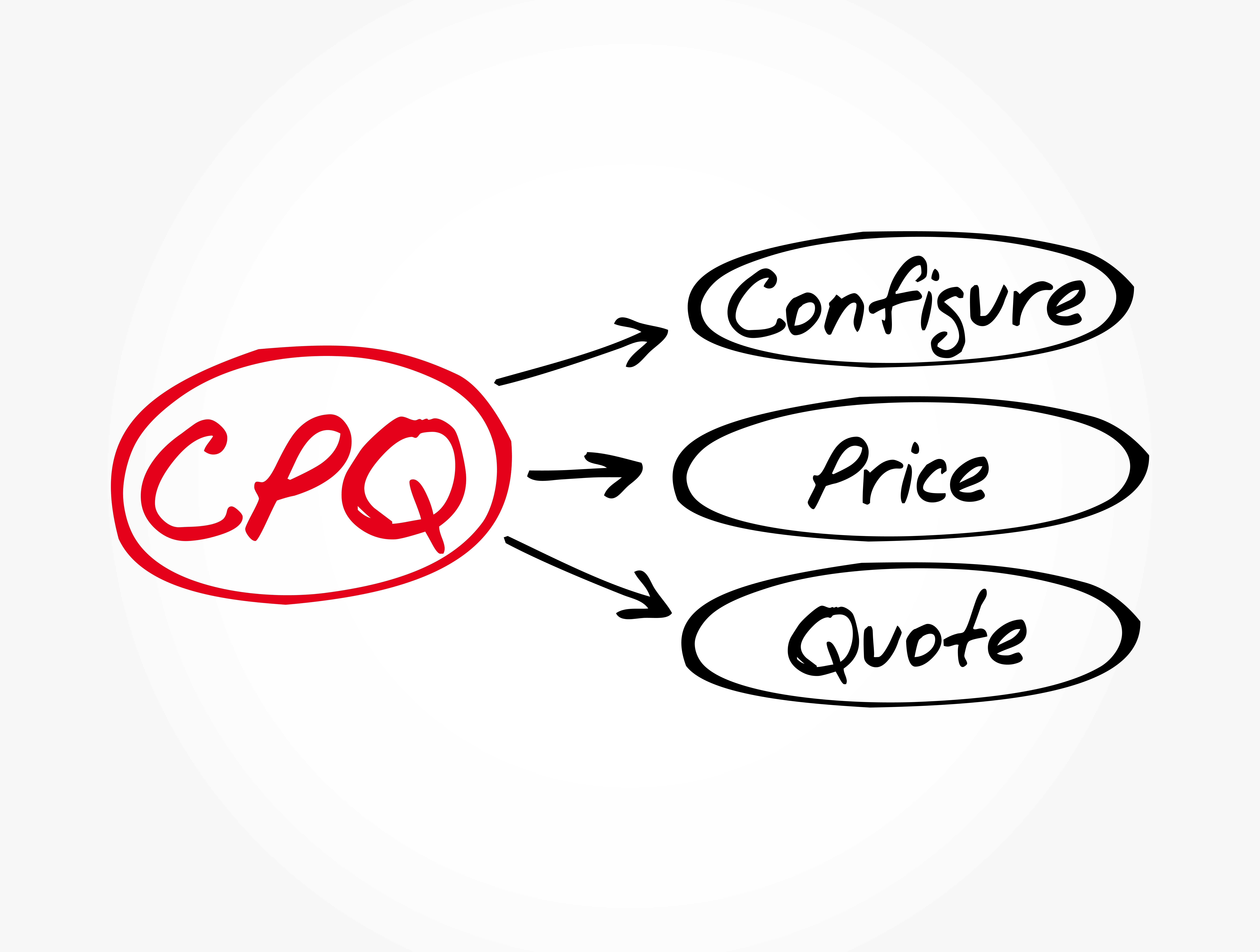
Data-driven insights help companies make more informed decisions. B2B guided selling gives businesses the ability to synthesize, connect and enrich disparate data sources and helps to build a more complete picture of how buyers behave. This allows sellers to identify needs, predict behaviors, and close more sales.
Business-to-business (B2B) companies often have vast data about their products, customers, and sales, but they don’t always know how to make sense of that data and draw actionable insights from it. This can be a daunting task in terms of tools and knowledge required. Guided selling solutions provide a streamlined approach to achieving this goal.
Before we get to B2B guided selling, let’s quickly run through what guided selling is in general. The concept is simple: it’s a selling process that aims to make the sales process an easier time to navigate towards a sale. If a customer finds it easy to navigate a site, the chances of an actual purchase go up significantly.
B2B guided selling definition
B2B guided selling follows the same logic but with a few extra steps. That’s because B2B commerce doesn’t involve impetuous customers who can choose to buy a new shirt whenever a “Buy It Now” sign flashes. Instead, an average B2B transaction usually takes up to 102 days.
Companies entrust B2B buyers to make cost-effective purchases. Special offers or flash sales won’t sway them. Instead, they develop relationships with sellers who can answer questions about how their product fills their company’s needs.
B2B guided selling involves using B2B-specific solutions that can help sales representatives make that sale. It helps salespeople to offer more targeted solutions to problems, walking them through product features that can help, and communicating with them during the entire sales process.
Modern B2B transactions often involve a lot of back-and-forth between buyers and sellers, with buyers having the upper hand in the modern marketplace. Thanks to the Internet, they have 24/7 access to information about the products they want as well as the companies that sell them. According to Worldwide Business Research, B2B buyers tend to complete 50%-70% of their research before contacting a sales rep.
Salespeople need all the help they can get
In most instances, buyers aren’t just satisfied with just the reliability of a product. They also want to know if the seller’s values closely align with theirs. If buyers realize that partnering with a company can help build a better world, they’ll be more likely to consider the purchase.
Getting buyers and sellers on the same page will require a lot of work. There’s prospecting, qualifying, lead nurturing. In between, salespeople will need to learn more about their clients, and this will involve a ton of research. Imagine doing all that then multiplying these tasks by the number of prospects. That’s when you quickly realize that sales reps need all the help they can get.
This is where B2B guided selling comes in. It provides sellers with the tools and processes to help get tasks completed more efficiently. Once they get face time, they can now use their heightened knowledge of their clients to engage with them better.
How does guided selling work?
B2B guided selling starts with a broad base of sales data which is then analyzed to provide information and guidance to your sales team. This analysis is what makes it possible for the platform to show reps and managers the status of each deal in the pipeline, the buyer and seller teams’ activity up to date, and what should happen next.
AI analysis of your organization’s historical sales data allows the platform to distill raw data into meaningful insights. This helps you to better understand what moves your deals forward most effectively, and provide real-time pointers on your sales teams’ most effective activities.
It also uses machine learning to keep sellers aligned with every stage of the sales process so they won’t miss a key detail or forget a crucial step. Whenever sales reps request a recommended course of action, the software will base its suggestion on what the data tells it. This way, sellers continue to work towards the buyer’s needs rather than focusing on the urgency to sell.
In the age of instant communication and rapidly advancing AI technology, relying on gut instincts won’t get you far in the B2B buyer’s journey. Data remains the best indicator of success. Leveraging tools that harness data and transform it into insights gives you a competitive edge over rivals. What better way to size up your sales team’s performance than to benchmark them against relevant data points such as current buyer behavior and market mood?
Guided selling for B2B vs B2C vs ecommerce
Guided selling works across different sales channels such as B2B and B2C eCommerce. As each channel works for a different type, the methods to guide each buyer works differently as well. The principle behind each method, however, remains the same.
B2B
The B2B guided selling process begins long before the buyer picks up the phone to call the sales representative. The buyer will have completed a preliminary assessment of the seller’s company and determined that it can possibly supply their needs. At this point, the buyer already has an idea of what to buy.
At the same time, the seller should strive to learn more about what the buyer represents aside from the company’s name. What need does the seller exactly fill with regard to this buyer? Are the seller’s company values aligned with the buyer’s? Sales reps should also be prepared for a barrage of questions regarding the company, the product, and the service. What should the buyer expect out of the box? What kind of after-sales service should the buyer expect?
B2C
In physical stores or other shops, guided selling often happens through another person. The store salesperson should possess excellent product knowledge, especially on featured items. This person should have no problems answering questions from buyers. In case a buyer comes in without any idea on what to buy, the salesperson should have the instinct to pick up on subtle cues and recommend products accordingly.
In addition, in-store merchandise should also provide customers with relevant information about the items on display to maintain interest even when the salesperson is attending to other customers.
B2C ecommerce
For ecommerce, the online shopper will be entirely dependent on the online store’s structure to get the needed information. Of course, some buyers will do their homework prior to heading to the ecommerce site. A well-designed site complete with product pages for each item that contains the description, SKU, and available stocks as well as a “buy” button should do the trick.
In addition, many online shops display a list of recommended items after every product page. This nudges customers to consider buying additional items that seem to pair well with their earlier purchase. The closer the site replicates a personal shopping experience for the buyer, the bigger the chances of the buyer clicking the “checkout” button.
Ecommerce sites can also feature virtual helpers such as chatbots, online help, and customer support links. They can further assist buyers if they find information on the website lacking or they have specific questions.
Why should you transition to B2B guided selling?
Sellers have less control over the buyer’s journey
Before, salespeople used to hold all the cards. When businesses wanted to buy products, they sought out salespeople. Once they formed a business relationship, it often became a longstanding arrangement. How was this possible? Simply because buyers did not have access to information as they do now: information about their seller’s competitors, competing products, and even price comparisons. Often, companies based their relationship with a supplier on how their sales rep treated them.
Nowadays, clients have the upper hand. A simple internet search can uncover all the information they need to know about your company, your competitors, and the prices and performance reviews of your competing products. This also includes knowing about the company’s values as well as its social responsibility programs. Since buyers already have the basic information, sellers should be thoroughly prepared. If not, customers will turn to a competitor.
The buyer’s journey isn’t linear anymore
The typical B2B buyer’s journey involves at least six steps before a purchase is finalized.
- Problem Identification
- Solution exploration
- Requirements building
- Supplier selection
- Validation
- Consensus creation
Buyers need to check all six boxes before pulling the trigger on the sale. However, in today’s setting, the six stages above don’t work in a linear fashion. Instead, buyers can loop between one or more steps. This means a typical buyer’s journey can involve revisiting one or more tasks until everybody can confidently sign off on the deal.
The sales process is more complex
If the buyer’s journey isn’t linear anymore, neither is the sales process. When dealing with B2B buyers, expect a lot of back-and-forths as buyers try to ascertain if the seller is a perfect fit. This means sales reps are dealing with longer sales cycles as they keep up with their client’s evolving needs.
In addition, the modern sales process gets its insights using AI and machine learning. In order to generate the information needed by analytics software, salespeople need to follow certain processes to ensure proper data collection. Ultimately, this means a more structured way of scheduling sales calls, and filling reports and orders. To successfully navigate through these regular tasks, salespeople will need to get help using B2B guided selling solutions.
Smarter upselling and cross-selling
Knowing your client better can lead to additional benefits for your mutual sales relationship. B2B guided selling means being aware of a buyer’s needs beyond what you currently supply.
Having in-depth knowledge of their sales needs allows you to tailor highly personalized solutions specific to their needs. You can generate deeper insights from your buyers by asking questions that go beyond the routine. For example, instead of just asking for the specifications of the planned desktop systems, a smart salesperson can also ask if their present systems slows down due to certain applications that use up a lot of processing power.
B2B guided selling provides rich insights that go beyond the current purchases of your clients. Understanding their problems allows you to make informed suggestions for upsell/cross-sell opportunities that make sense for buyers as well.
Going back to the earlier example, the savvy salesperson can explain that their computing-intensive application can run better and more efficiently if they adjust their system requirements accordingly. Since the data confirm the findings, buyers can appreciate the upsell offer better.
A trusted solutions provider will have an easier time offering upgrades, extended warranties, and after-sales services without sounding like a used-car salesman.
Guided selling improves customer experiences
Guided selling gives buyers the opportunity to pair with a like-minded salesperson. This results in the latter providing the client with products and services that fit exact specifications. This also gives the salesperson the confidence to inform his client if a better value-added deal is available. Once the client finds the recommendation in sync with the company’s needs, this heightens the customer experience.
What’s a business relationship for if not to establish giving and receiving value in every transaction? Once sales representatives learn to master the art of asking the right questions, they will be better equipped to serve the needs of their customers that go beyond the bare minimum.
Guided selling removes sales barriers
Unfortunately, B2B transactions involve a lot of moving parts. Buyers’ jobs are not just non-linear, they loop until the organization feels comfortable finalizing the sale. Easily-disheartened salespeople can interpret this as an excuse to cut their losses and leave. However, for the more experienced salesperson, this is an opportunity to know more about specific buyer journeys in order to identify potential sales barriers.
With B2B guided selling, the sales team can analyze the data and generate insights on how to better collaborate with buyers to increase engagement rates. This can eventually lead to buyers sharing their problems and frustrations with you, which can enable the creation of improved solutions that speak directly to the buyer’s problems.
Communication opportunities are limited and valuable
Guided selling also teaches salespeople to value their limited interaction time with the client. Buyers will evaluate every conversation with sellers to see if this helps or harms their cause.
Don’t waste their time or yours by transmitting the same digital noise that everybody else generates. Instead, strive to consistently add value to your offerings. If the buyer notices the incremental value you generate, they will want to get your views on their other problems.
Guided selling helps salespeople learn how to interpret buyer signals and respond accordingly.
Efficient response can lower sales barriers
As B2B sales cycles often stretch longer than other channels, acquiring the skill that helps buyers to reduce the sales cycle period becomes an invaluable tool.
The key to shortening the sales cycle is by improving response time to buyers. Sellers can do so by being quick when answering buyer inquiries, or by proactively offering information even before the buyer thinks of a question.
Guided selling enables a faster sales process
Improving communication through guided selling can lead to shorter sales cycles, which can lead to more sales in the same period. It’s a matter of establishing the pace of interactions with the buyer.
In contrast, not answering a buyer’s question or taking too long between replies can stretch the buyer’s journey timetable until the customer gets a satisfactory response. Guided selling also provides insight for continuous improvement of sales processes.
Where you can implement guided selling
Applying B2B guided selling can spell the difference between good and grand. Instead of offering clients off-the-shelf solutions, it pays to listen to the buyer’s unique needs, which allows the seller to come up with solutions that actually address these adequately.
Custom products need custom CPQ software
A custom furniture company, for example, persisted with repurposed software that generated generic quotations (instead of a CPQ (configure, price, and quote) tool). This meant that salespeople could generate quotes but they couldn’t modify the specifications to show the actual custom dimensions.
After toiling with the repurposed software, the company in question finally decided to implement new a new tool that addressed their problem by generating quotes based on custom furniture. The team tasked to build the CPQ applied a guided selling approach to the new software’s design. They asked for input from the eventual users on quotation requirements.
Afterward, they gathered insights from the manufacturing team that actually made the custom furniture. This led to the development of custom quote software that replicated the manufacturing department’s furniture designer. The team then managed to generate quotes that included a bill of materials based on the actual furniture design.
The result was outstanding. By involving everybody in the furniture-making business, from designers to carpenters to salesmen, they managed to replicate the manufacturing success to the sales team. Now, they can generate custom furniture quotations including drawings within a single application. The use of the CPQ software skyrocketed and nobody reported any inaccuracies in the design, price, or dimensions anymore.
B2B guided selling and CPQ
As shown in the above example, using tools that cannot accurately reflect what the company manufactures can lead to a huge loss of efficiency. Inaccurate designs, bills of materials, and distorted prices mean frequent back-and-forth sessions with various departments to check the accuracy of the quote.
A well-designed CPQ can serve as an excellent sales and training tool. CPQ can help qualify or close leads and create upsell opportunities. In addition, having a CPQ on hand when a client suddenly expresses the readiness to purchase is invaluable. A salesperson can simply open the software and create a quotation based on templates and preset designs and unit costs. Once finalized, the client can immediately receive it and make a decision to sign the agreement.
Existing products already have a saved copy available for presentation to the client. It also allows rookie salespersons to train the process of creating a new quotation from scratch.
AI and guided selling
Guided selling also features the ability to generate insights from data broken down by Artificial Intelligence (AI). This means the software will collect all recorded work data in order to establish patterns that can predict success or failure in future endeavors.
Salespeople often spend mornings plotting their appointment schedules, listing their cold call targets, and performing other administrative work. This data, along with sales performance information, will be collected by the AI software for analytics purposes. Based on the information, the software can predict patterns of each attempt at the selling process. It will predict which is more successful, sales pitches that close faster, or sales calls that take longer. It can also identify those who adhered to the B2B guided selling requirements in logging in data or performing x number of calls a day to cold call.
AI will also benchmark sales performance against customer data to see if there are patterns. The system will then determine the stages of the buyer’s journey. This includes the time customer engagement started when customers started leaving buy signals. Then, it correlates data with a set of variables and generates suggestions on how to move the process forward.
B2B guided selling final thoughts
Much of the debate between sales gurus these days centers around the question of which is more effective – old-school sales reps that talk to buyers and generate leads, or the new breed of digital-savvy salespeople who focus primarily on nurturing their existing prospects.
According to Gartner’s Current and Emerging Technologies in Sales report, it’s clear which way that debate is headed. Just about half (51%) of sales organizations today have deployed or plan to deploy guided selling over the next five-year period. Once salespeople become used to the rigors of guided selling, AI and machine learning will handle the rest.
As sales teams begin to mature and incorporate more of the new tools, technologies, and methodologies that allow them to thrive in a digital-first world, the guidance from the technology helps the best teams enhance their selling tactics and make the shift to higher performing behaviors. By combining human input with technology insight, it’s possible for sales organizations to level up at an increasingly accelerated pace.
From deskbound to field bound, Skynamo provides functionality and features for sales managers (desktop), inside sales and sales admin teams (desktop), and field sales reps (mobile) to collaborate and make smarter sales decisions together. Skynamo lets you start customer engagements with full knowledge of all previous interactions and info – even if you’re taking over an account for a colleague. All information is available – even offline.
Chat to the Skynamo team today and discover how our solution enables easy access to an unbelievable amount of solid, concise and usable data that will lead to smarter decisions.






